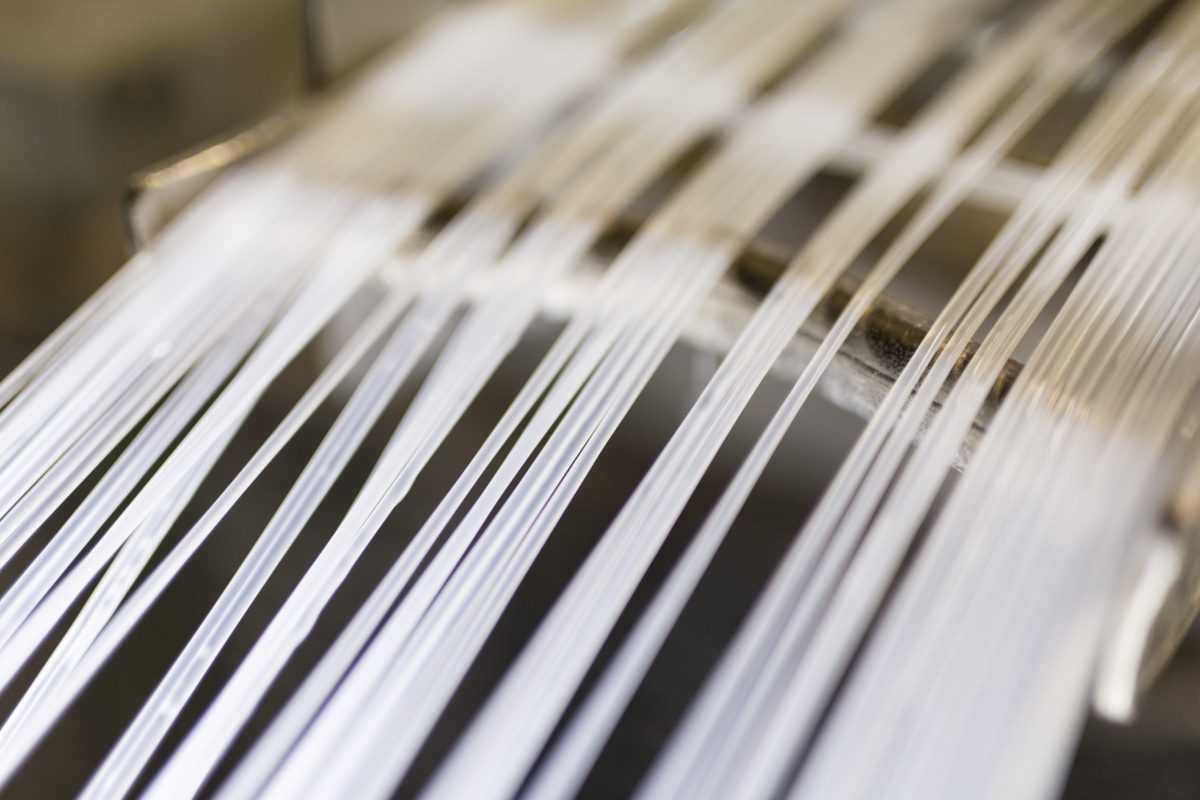19TH MAY 2021: Today, ECONYL® Regenerated Nylon celebrates 10 years of closing the loop. Utilised by brands globally throughout the fashion industry from Gucci and Prada to Adidas and Speedo, the infinitely recyclable yarn is also championed in the interiors world by BMW, Mercedes Benz, Interface and Tarkett.
Nylon waste, including fishing nets, old carpets and nylon industrial waste, which would otherwise pollute the Earth, is transformed into ECONYL® regenerated nylon, boasting the same qualities as brand-new nylon but unlike traditional nylon, ECONYL® can be recycled, recreated, and remoulded again and again.
Created by the Aquafil Group, ECONYL® regenerated nylon has been providing more responsible solutions for the fashion and interior world for the last ten years. The journey to find this solution, however, was not an easy one and began with a research and development in 2007 into the end of life of Nylon 6 products by Chairman and CEO Giulio Bonazzi.
Reflecting on the journey so far, Bonazzi says, “We started this journey many years ago and met a variety of challenges along the way from creating a reverse logistic and supply chain, implementing a responsible procurement process, and building an industrial plant.
Early on, we realised that a lot of the waste included carpets or fishing nets which are difficult to disassemble and we were only able to regenerate nylon 6 waste. This hurdle forced us to literally invent and implement a new set of technologies to disassemble the various components while finding different purposes for each one of them to avoid sending any product to landfill.
Waste for me is not something to be disposed of, but a fantastic resource, whenever I see a landfill site, I really see a goldmine. Our planet’s resources are extremely limited; it is clear that there is no time to waste which is why 10 years ago, I took a gamble on sustainable design and created ECONYL®”.
Each year in the USA, four billion pounds of carpet is discarded in landfills. Thanks to the two Aquafil facilities, up to 36 million pounds of carpet is processed annually and the old carpets are broken down into their three main components: polypropylene (PP), Nylon 6 and calcium carbonate.
The Nylon 6 is sent to the ECONYL® Regeneration Process in Slovenia with other waste, like reclaimed fishing nets or textile scraps, and turned into ECONYL® which is then used to create products for Stella McCartney, Burberry, BMW and many others.
One such brand, premium casualwear brand Napapijri collaborated with Aquafil and in 2019 unveiled the Circular Series, its first circular, 100% recyclable apparel collection. The collection’s main material innovation is its mono-material composition – its filling and trims are made from Nylon 6, while its fabric is made from ECONYL® Regenerated Nylon – the use of one material allows for an easier recycling process and fibres are upcycled without losing any of their original characteristic or quality, which means that the collection can be recycled again and again.
ECONYL® Regenerated Nylon is an important solution for the planet as for every 10,000 tons of ECONYL® raw material, 70,000 barrels of crude oil are saved, and 65,100 tonnes of CO2 eq. emissions are avoided.
Additionally, the process of created ECONYL® reduced the global warming impact of nylon by up to 90% when compared with traditional nylon.
————————————————————————————————————————
Notes to Editors
Giulio Bonazzi, grew up working for the family business founded by his parents in 1956, which specialised first in producing waterproof jackets, followed by synthetic fibres before cementing Aquafil as one of the leading companies in the world in the field.
In 2007, Bonazzi began to introduce his vision of creating regenerated, and particularly regenerable, products to the company, he was met with a great deal of criticism. However, his passion and desire to truly innovate drove him forward and why companies such as Prada are now counted among Aquafil’s ever-growing list of clients.
Aquafil has two facilities dedicated to disassembling carpets in the USA one of the countries responsible for the largest production and consumption of carpets, and consequently waste. The company has recently acquired a Carpet Collection which deconstructs old carpets into parts.
The four stages of the ECONYL process:
01_Rescue
The ECONYL® Regeneration System starts with rescuing waste otherwise polluting the Earth, like fishing nets, fabric scraps, carpet flooring and industrial plastic all over the world. That waste is then sorted and cleaned to recover all of the nylon possible.
02_Regenerate
Through a radical regeneration and purification process, the nylon waste is recycled right back to its original purity. That means ECONYL® regenerated nylon is exactly the same as fossil-based nylon.
03_Remake
ECONYL® regenerated nylon is processed into yarns and polymers for the fashion and interior industries.
04_Reimagine
Fashion brands and carpet producers use ECONYL® regenerated nylon to create brand new products. And that nylon has the potential to be recycled infinitely, without ever losing its quality. The goal is that once all products containing ECONYL ® are no longer useful to customers, they can go back into step one of the Regeneration System.
